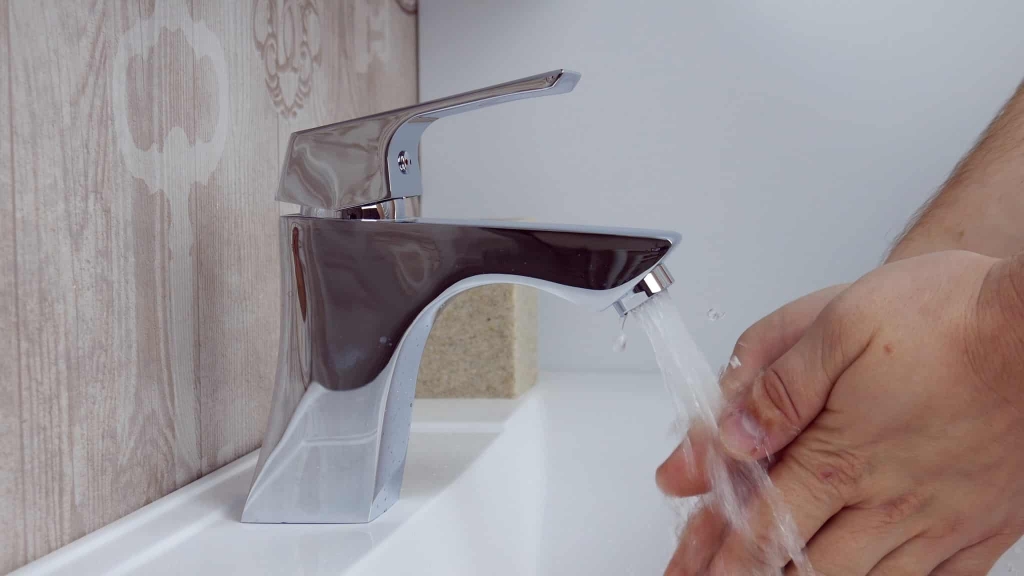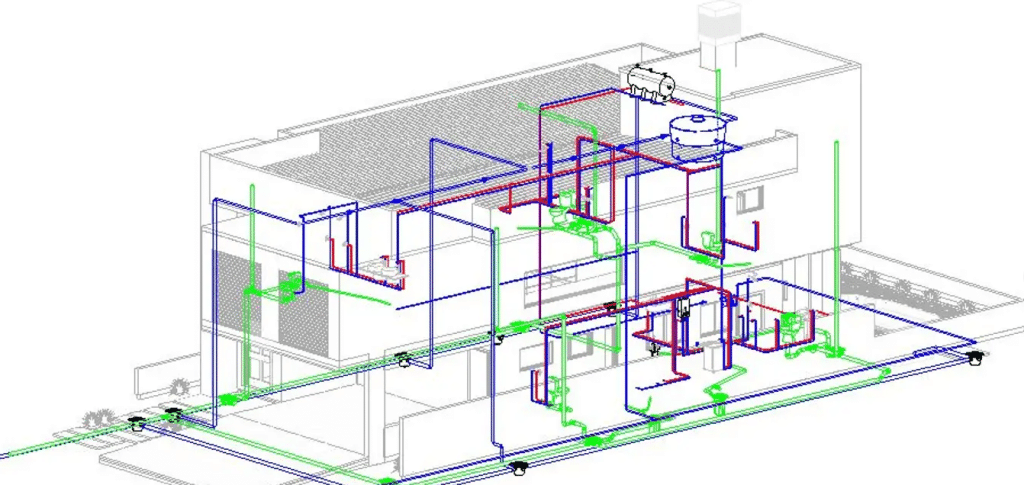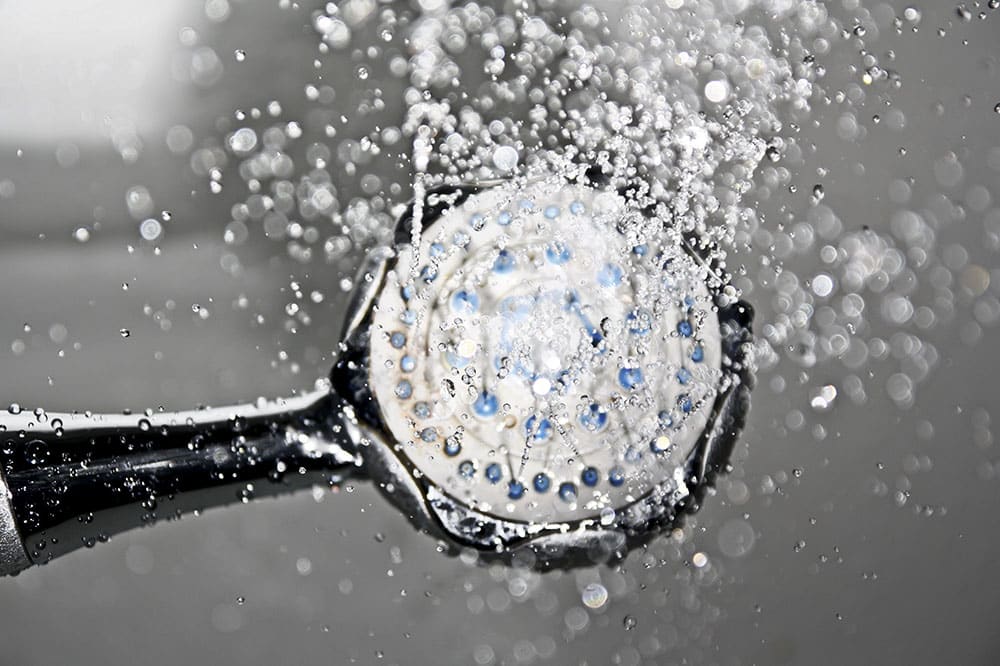When it comes to plumbing projects, innovation and efficiency are key words. As an expert in the area of interior design and home and garden, I understand the importance of a well-planned and executed plumbing system. It not only ensures the comfort and functionality of your home, but also contributes to sustainability and savings. Today, I will share with you the top 10 strategies to improve the quality of your plumbing project.
Water connection and water meter installation

In most cities, a water supply project is required to request a water connection on the property. Therefore, plan to prepare the project in advance and request the connection after approval from the municipal planning department. When making the connection, the water meter must be installed according to the specifications provided by the water company.
Water tank sizing
In residential plumbing projects, pre-cast water tanks are often used. However, in larger buildings, such as condominiums and apartment blocks, cisterns are commonly installed to reduce the weight on the structure.
To calculate the appropriate tank size, you need to know the number of inhabitants. If this information is not available, you can estimate two people per room. There is a table that establishes the daily water consumption:

- Popular or rural housing: 120 liters of water per day for each individual;
- Single-family homes: 150 liters of water per person per day;
- Apartments: 200 liters of water per person each day;
- Green areas: 1.5 liters of water daily per square meter.
After calculating the daily water consumption, it must be multiplied by the number of days required for reserve (normally 2 days). Considering a residence with two bedrooms and 4 inhabitants, we have:
- 4 individuals x 150 liters per day = 600 liters per day.
- Multiplying by 2 days of reservation, we get: 600 liters x 2 days = 1,200 liters.
In this situation, it is advisable to purchase a tank with a minimum capacity of 1,200 liters. As this volume is not common on the market, the alternative would be to opt for a water tank with a capacity of 1,500 liters.
Conventional height of water points

Each hydraulic device – washbasin, tank, shower, toilet, etc. – has a conventional height. These heights can be adapted according to the hydraulic design:
- Lavatório de banheiro com torneira na bancada: 0.50m to 0.60m from the ground;
- Bathroom sink with wall-mounted faucet: 1.10m to 1.20m from the ground;
- Shower: 2.10m to 2.30m from the floor; 4 – Shower valve: 1.30m from the floor;
Installation of plumbing and hydraulic connections
At this stage, you must install the pipes that carry water to the different consumption points, such as sinks, showers and toilets. These pipes must be properly connected to the previously mentioned valves. It is important to use quality materials and adequate connections to avoid leaks and future problems.
Installation of sewage and drainage system
Sewage and rainwater drainage are essential parts of the hydraulic project. It is necessary to properly plan and install sewage pipes, drains and grease traps, thus ensuring the correct flow of effluents and preventing blockages and unpleasant odors.
Hydraulic system testing and maintenance
After installing the hydraulic system, it is important to perform pressure and flow tests at all water points. This will ensure that everything is working properly and help identify possible system failures. In addition, it is essential to perform periodic maintenance on the hydraulic system, checking connections, valves, pipes and water tanks. This practice helps to extend the life of the system and prevent future problems, such as leaks and blockages.
Important tips for an efficient hydraulic design
Always consult a professional specialized in the area to develop and execute the plumbing project for your home, thus ensuring the quality and safety of the system. Use quality materials and adequate connections to avoid leaks and future problems. Plan the layout of the pipes and registers well, in order to facilitate maintenance and the eventual need for repairs.
Pay attention to local technical standards and regulations related to plumbing installations to ensure that your project complies. Invest in water-saving systems, such as faucets and showers with flow reducers and dual-flush toilets. This will help reduce water consumption and, consequently, the amount of your bill.
Implementation of alternative water supply systems
In addition to efficient plumbing design, you may want to consider implementing alternative water supply systems, such as rainwater harvesting and greywater reuse. These solutions help reduce reliance on potable water for activities that do not require high-quality water, such as irrigating gardens and flushing toilets.
Rainwater harvesting
Rainwater harvesting involves collecting and storing rainwater for later use. This system may include gutters, pipes, filters and specific reservoirs for storing the collected water. Rainwater can be used for non-potable purposes, such as irrigation, washing outdoor areas and flushing toilets. In addition to reducing the consumption of drinking water, rainwater harvesting helps to reduce surface runoff and overloading urban drainage systems.
Grey water reuse
Greywater reuse involves collecting, treating and reusing wastewater from household activities such as washing clothes, washing dishes and bathing. This type of water can be treated and reused for non-potable purposes such as irrigation and toilet flushing. Implementing greywater reuse systems helps reduce potable water consumption and the burden on sewage systems.
Implementation of alternative water supply systems
In addition to efficient plumbing design, you may want to consider implementing alternative water supply systems, such as rainwater harvesting and greywater reuse. These solutions help reduce reliance on potable water for activities that do not require high-quality water, such as irrigating gardens and flushing toilets.
Rainwater harvesting
Rainwater harvesting involves collecting and storing rainwater for later use. This system may include gutters, pipes, filters and specific reservoirs for storing the collected water. Rainwater can be used for non-potable purposes, such as irrigation, washing outdoor areas and flushing toilets. In addition to reducing the consumption of drinking water, rainwater harvesting helps to reduce surface runoff and overloading urban drainage systems.
Grey water reuse
Greywater reuse involves collecting, treating and reusing wastewater from household activities such as washing clothes, washing dishes and bathing. This type of water can be treated and reused for non-potable purposes such as irrigation and toilet flushing. Implementing greywater reuse systems helps reduce potable water consumption and the burden on sewage systems.
Maintenance and inspection of hydraulic systems
Regular maintenance and inspection of plumbing systems are essential to ensure proper functioning and durability of the installations. Failure to do so can lead to problems such as leaks, blockages and damage to the structure of the house. Therefore, it is essential to pay attention to the following aspects:
Visual inspection
Perform periodic visual inspections of pipes, connections, valves and other components of the hydraulic system. Check for signs of corrosion, cracks, leaks or other irregularities that may indicate problems. If you identify any abnormality, contact a specialized professional to carry out the necessary repairs.
Cleaning and unclogging drains and gutters
Regular cleaning of drains and gutters is important to prevent blockages and the accumulation of debris that can compromise the functioning of the sewage and drainage system. Remove leaves, branches and other debris that may accumulate in the gutters and drains, and check that the water is draining properly.
Checking water-saving devices
Make sure water-saving devices, such as flow reducers and faucet aerators, are working properly. These devices can help reduce water consumption and save money on your water bill.
Maintenance of pumps and pressurization systems
Pumps and pressurization systems are critical components of the plumbing system, responsible for maintaining adequate water pressure throughout the home. Perform periodic maintenance and inspection of these equipment, according to the manufacturer's recommendations, to ensure their efficient operation and long service life.
Monitoring and maintenance of alternative water supply systems
If you have rainwater harvesting or greywater reuse systems, be sure to monitor and maintain them properly. Regularly check components such as filters, pumps and reservoirs, and follow the manufacturers’ recommendations to ensure that these systems are functioning properly and efficiently.
Maintaining an efficient and sustainable hydraulic project goes beyond its design and execution. Regular maintenance and inspection are essential to ensure the durability and proper functioning of hydraulic systems, as well as the preservation of water resources. By investing in preventive maintenance and adopting sustainable practices, you contribute to the well-being of your family and the preservation of the environment.
Curiosity: Did you know that using smart sensors in hydraulic systems can reduce water consumption by up to 20%? Technology is here to help us be more efficient!
Conclusion
Improving a plumbing project is an investment in comfort, safety and sustainability. With the right strategies, you not only optimize water use, but also contribute to a more sustainable future.
Frequently Asked Questions
1. How important is it to choose high-quality materials for hydraulic design?
High-quality materials ensure greater durability and less maintenance, avoiding frequent problems such as leaks and corrosion.
2. How can automation improve the hydraulic system?
Automation allows remote control of flow and temperature, bringing more comfort, efficiency and savings.
3. Is it possible to integrate sustainability into hydraulic projects?
Yes, through rainwater recovery systems and the use of water-saving technologies.
4. Why is pipe insulation important?
Proper insulation prevents heat loss, ensuring that the water reaches the desired temperature at the points of use and reducing energy waste.
5. What is the ideal frequency for preventive maintenance?
It depends on the system, but an annual checkup is recommended to keep everything running optimally.
6. How to detect hidden leaks?
One effective way is to monitor your water bill for unusual variations, in addition to regular inspections by a professional.
Did you like this amazing tip? If so, share it with your friends and on your social networks. Leave your comment below and your suggestions. Receive it daily here on our website. Blog of ideas and tips free and follow us on Google News too. Thank you!